Pictures and words in space:
- Comics = pictures and words diagrammed in space
- Blackout poems = words in space
- Mind maps = pictures and words diagrammed in space
What I’m trying to do when I make a mind map: I’m trying to construct a 2-D memory palace on paper. By making notes in a non-linear manner, by arranging images and words in space, I can SEE connections that would otherwise be impossible with just words written in sequence.
I use mind-maps for several things:
1) Brainstorming
Generating ideas, rather than just preserving them.
2) Taking notes on books
(Oddly, I have only attempted non-fiction, never fiction. Not entirely sure why this is.)
3) Taking notes on documentaries
4) Recording meetings and events
5) Remembering conversations
Note: this post was a response to the Vizthink prompt, “In what unique way do you use Mind Maps?“
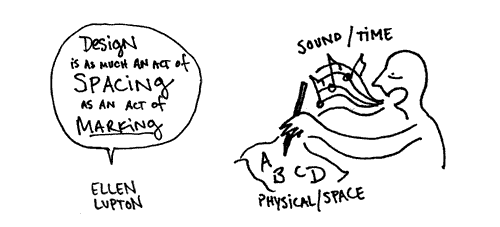
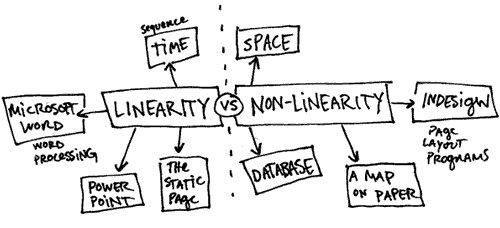
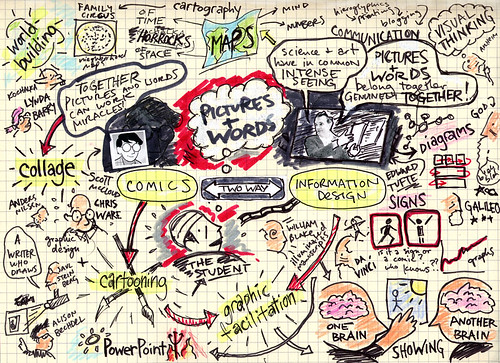
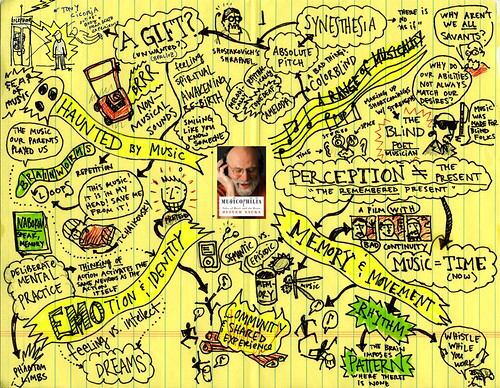
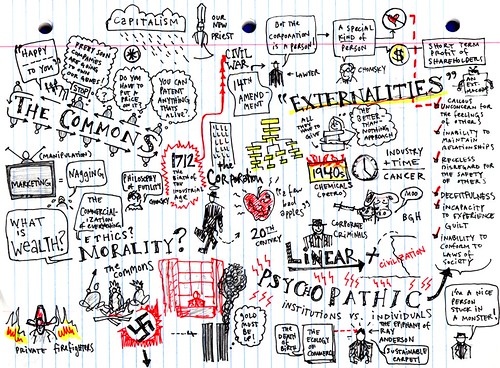
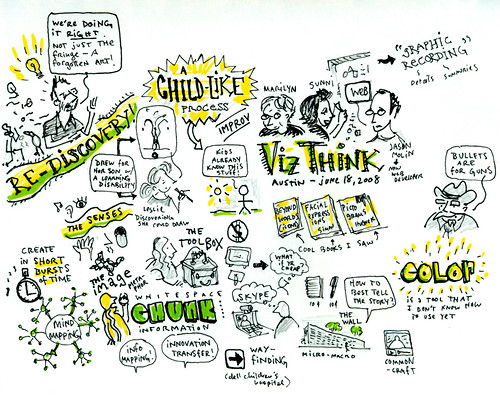
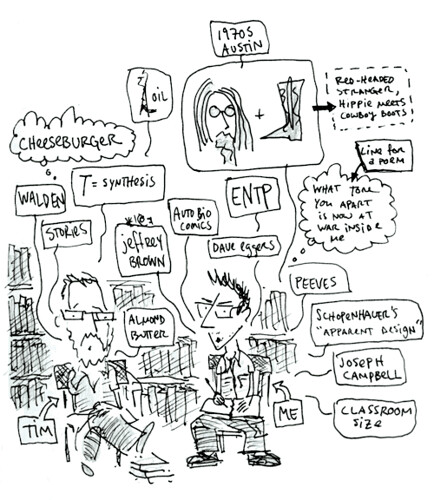
Wow! Your mind maps are works of art in themselves. Very nice. When I was in eighth grade my horribly boring history teacher used mind maps and I found it a horrible way to learn. However, when I entered college mind maps worked for me as both a note taking method and a way to get ideas for art projects. My senior design thesis project in fact was a mind map that I kept refining over and over again until it became a huge photo college / typographic poster. Anyway, I’m blabbing on now. Thanks for the post.
I’m delighted to see your mind map site. You may be interested to know that I was one of the first mindmappers. If you’re not familiar with my book Drawing Your Own Conclusions: Graphic Strategies for Reading, Weiting, and Thinking (Boynton/Cook – Heinemann), which is still in print after all these years, you might want to have a look.
Best,
Fran Claggett
I’ve been using Personal Brain for my mind maps – it works OK, but I find I’ve been using my notebook more and more for paper sketches. I don’t always find the right way to represent what is happening as ‘ideas’ – I find myself bogged down in the details. A problem, I know, but I can’t be the only one, can I?
but then what happens?
Here’s a great example of using a map format to tackle fiction – On The Road, in fact – although I wouldn’t go so far as to call it a “mindmap”, as it visually represents the rhythms and constructs of the text itself vs. the context of the narrative. Still looks pretty cool, though…
http://designmind.frogdesign.com/articles/numbers/writing-without-words.html#/images/dm/numbers/writingwithoutwords_01.gif
thanks, y’all!
I teach high school English and was wanting to know if you could email me a template or a blank one so that I could have my students do this!! I teach in an inner city and I think they would love this!!!!!!!!!!!!!!!!!
I am in the last stages of developing a website entitle the ELL Teacher Tool Kit and CD Desk Reference for teachers working with English Language Learners (ELLs) or English Second Language Students(ESLs), depending on what state you’re from, that will provide thousands of outstanding ideas and tools for educators. This is an incredible site. One of the best I have seen in a year of research and writing.
Can I have permission for teachers to link to your site from mine?
Can I feature you and this site on my ELL Tool Kit Resource CD and Desk Reference?
Many Thanks
Carol Prater
Director of the C.R.E.A.T.E. Foundation
A Non-Profit Educational Foundation
Sponsoring Enrichment and Educational Projects
for teachers and students everywhere
I would like for my students to design mind maps for the person they chose to do a biography on. Can you help me to give them clear instructions on how to do this. I think your mind maps are very cool, and my 5th Grade students would much rather write their biographies this way than the old fashion traditional way. Thanks RuthAnne
Ruthanne,
There are plenty of tutorials online that would do a better job than I would.
Also, you could check out Tony Buzan’s book: